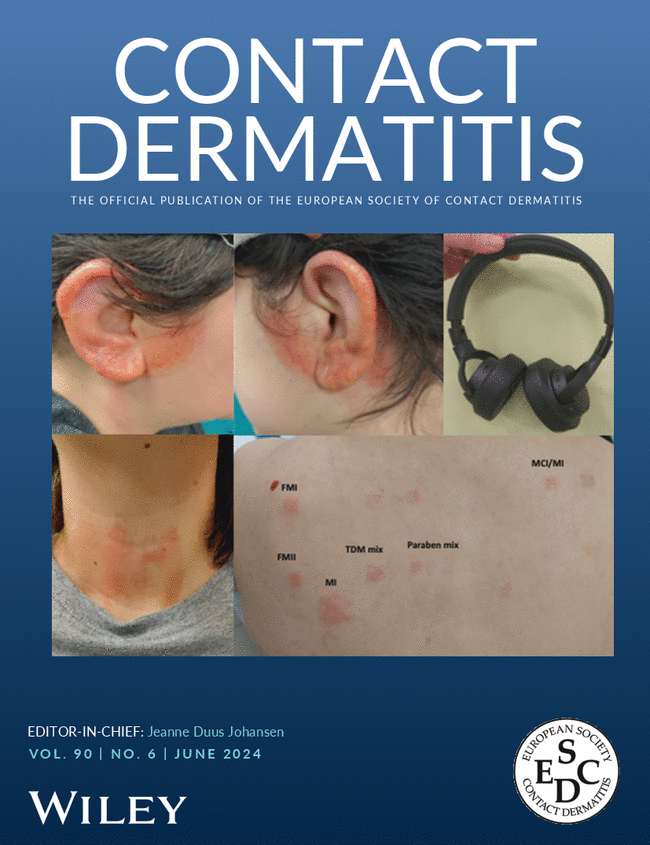Sensitization Patterns to Cyanoacrylate-Based Surgical Glues
Abstract
Background
Surgical glues are increasingly used, offering advantages like reduced scarring and faster wound closure. However, they pose risks of localised and disseminated allergic contact dermatitis caused by cyanoacrylate monomers.
Objectives
This study aims to evaluate sensitisation patterns to cyanoacrylate-based surgical glues, the usefulness of testing with the commercially available ethyl cyanoacrylate, and cross-reactions between cyanoacrylates and (meth)acrylates.
Patients/Methods
Sixteen patients with suspected allergic contact dermatitis (ACD) from surgical adhesives were patch tested with the European Standard and Acrylate series (only containing ethyl cyanoacrylate) among other series, of whom 15 were tested with the surgical glues used. Clinical data, including demographics and surgical histories, were collected.
Results
Fifteen patients (94%) tested positively to surgical glues, with 81% showing positive reactions to ethyl cyanoacrylate, to which the patient not tested to the glue “as is” also reacted. Three ethyl cyanoacrylate-negative patients reacted to Dermabond Prineo. Exclusive sensitisation to ethyl cyanoacrylate was observed in eight patients, while five reacted to other (meth)acrylic compounds.
Conclusions
Ethyl cyanoacrylate is a screening agent for surgical-glue sensitised patients, but if negative, tape-stripping-modified patch testing, also with the glues, is indicated. Cross-reactions can occur between cyanoacrylates and co-reactions (concomitant sensitization) with certain (meth)acrylates. Primary sensitisation is particularly relevant in patients undergoing treatment with cyanoacrylate-based glues for the first time, rather than because of previous exposure to other sources.


 求助内容:
求助内容: 应助结果提醒方式:
应助结果提醒方式:


